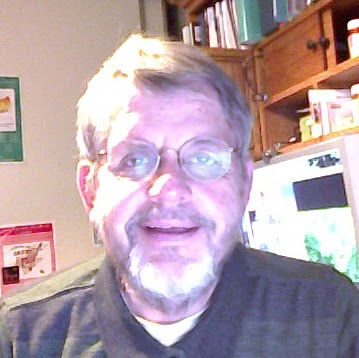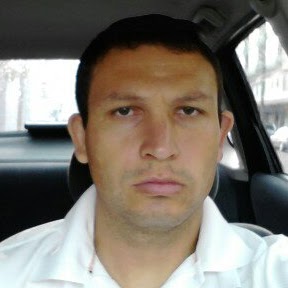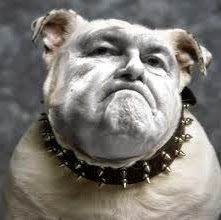Jerry L Potter
age ~83
from Naples, FL
- Also known as:
-
- Jerry Dr Potter
- Jane L Potter
- Jerry Postlewait
Jerry Potter Phones & Addresses
- Naples, FL
- Simpsonville, SC
- 5426 Corbett Dr, Fort Collins, CO 80528
- 3251 Waterford Ave NW, Canton, OH 44708 • 3304780373
- North Canton, OH
- 7389 Shadyview Ave NW #5, Massillon, OH 44646 • 3306478632
- Champion, NY
Work
-
Company:The Hardison Law Firm, P.C.
-
Address:
Specialities
Alternative Dispute Resolution • Litigation - General Civil Practice • Alternative Dispute Resolution
Isbn (Books And Publications)

The Sultana Tragedy: America's Greatest Maritime Disaster
view sourceAuthor
Jerry O. Potter
ISBN #
0882898612


Fatal Justice: Reinvestigating the Macdonald Murders
view sourceAuthor
Jerry Allen Potter
ISBN #
0393030008

Fatal Justice: Reinvestigating the Macdonald Murders
view sourceAuthor
Jerry Allen Potter
ISBN #
0393315444



Associative Computing: A Programming Paradigm for Massively Parallel Computers
view sourceAuthor
Jerry L. Potter
ISBN #
0306439875

Us Patents
-
Method For Recognizing And Interpreting Patterns In Noisy Data Sequences
view source -
US Patent:8504374, Aug 6, 2013
-
Filed:Jan 27, 2010
-
Appl. No.:12/657770
-
Inventors:Jerry Lee Potter - Fort Collins CO, US
-
International Classification:G10L 21/00
-
US Classification:704277
-
Abstract:This invention maps possibly noisy digital input from any of a number of different hardware or software sources such as keyboards, automatic speech recognition systems, cell phones, smart phones or the web onto an interpretation consisting of an action and one or more physical objects, such as robots, machinery, vehicles, etc. or digital objects such as data files, tables and databases. Tables and lists of (i) homonyms and misrecognitions, (ii) thematic relation patterns, and (iii) lexicons are used to generate alternative forms of the input which are scored to determine the best interpretation of the noisy input. The actions may be executed internally or output to any device which contains a digital component such as, but not limited to, a computer, a robot, a cell phone, a smart phone or the web. This invention may be implemented on sequential and parallel compute engines and systems.
-
Method For Recognizing And Interpreting Patterns In Noisy Data Sequences
view source -
US Patent:20130317816, Nov 28, 2013
-
Filed:Jul 31, 2013
-
Appl. No.:13/955117
-
Inventors:Jerry Lee Potter - Fort Collins CO, US
-
International Classification:G10L 15/20
-
US Classification:704233
-
Abstract:This invention maps possibly noisy digital input from any of a number of different hardware or software sources such as keyboards, automatic speech recognition systems, cell phones, smart phones or the web onto an interpretation consisting of an action and one or more physical objects, such as robots, machinery, vehicles, etc. or digital objects such as data files, tables and databases. Tables and lists of (i) homonyms and misrecognitions, (ii) thematic relation patterns, and (iii) lexicons are used to generate alternative forms of the input which are scored to determine the best interpretation of the noisy input. The actions may be executed internally or output to any device which contains a digital component such as, but not limited to, a computer, a robot, a cell phone, a smart phone or the web. This invention may be implemented on sequential and parallel compute engines and systems.
-
Method And Apparatus For Controlling A Digital Computer Using Oral Input
view source -
US Patent:57296596, Mar 17, 1998
-
Filed:Jun 6, 1995
-
Appl. No.:8/471787
-
Inventors:Jerry L. Potter - Canton OH
-
International Classification:G10L 900
-
US Classification:395 279
-
Abstract:Oral input is used to control a digital computer. Associative searching techniques of tabular data structures are used in conjunction with rules and conventions derived from natural language to facilitate the use of oral input. The method is capable of being implemented in connection with conventional sequential computers, associative single-instruction multiple data computers and parallel processors.
-
Magnification/Demagnification Apparatus And Method
view source -
US Patent:42754500, Jun 23, 1981
-
Filed:Aug 1, 1979
-
Appl. No.:6/062607
-
Inventors:Jerry L. Potter - Massillon OH
-
Assignee:Xerox Corporation - Stamford CT
-
International Classification:G06F 1520
H04N 104 -
US Classification:364515
-
Abstract:Apparatus and method to permit selective variation in the size of the output image derived from digital image signals. A Reduction Ratio register is pre-programmed to a count reflecting the image size desired with a Threshold register set to the desired threshold count. The count from the Reduction Ratio register is input to an Accumulator and summed with the count left over from processing the previous image signals. The Accumulator count and the Threshold count are compared. Where the Accumulator count exceeds the Threshold count, the image signal in process is passed on. Where the Accumulator count is less than the Threshold count, the image signal is deleted and the count from an Additive Reset register is added to the Accumulator. In an alternate embodiment, a Counter is set to the magnification ratio integer number and pulses a control gate astride the stream of image signals according to the Counter setting to generate additional image signals. An Add-one circuit responds to an Accumulator/Threshold register comparison to temporarily increase the setting of the Counter by one.
Lawyers & Attorneys

Jerry Potter - Lawyer
view sourceOffice:
The Hardison Law Firm, P.C.
Specialties:
Alternative Dispute Resolution
Litigation - General Civil Practice
Alternative Dispute Resolution
Litigation - General Civil Practice
Alternative Dispute Resolution
ISLN:
904345818
Admitted:
1976
University:
Memphis Cecil C. Humphreys School of Law
Classmates

Jerry Potter
view sourceSchools:
Central High School Low Moor VA 1955-1959
Community:
Joe Fisher, Peggy Mahaney, Charles Paitsel, Laura Franklin

Jerry Potter
view sourceSchools:
Tinley Park High School Tinley Park IL 1981-1985
Community:
Art Neff, Patricia Shields

Jerry Potter
view sourceSchools:
Central High School Low Moor VA 1955-1959
Community:
Joe Fisher, Peggy Mahaney, Charles Paitsel, Laura Franklin

Jerry Potter
view sourceSchools:
Walter F. George High School Atlanta GA 1981-1985
Community:
Deborah Arnesen, Reena Caldwell

Jerry Potter
view sourceSchools:
Paintsville High School Paintsville KY 1962-1966
Community:
Ruby Johnson, Ruby Adams, Edgar Walters

Jerry Potter
view sourceSchools:
Whitehouse High School Whitehouse TX 1990-1994
Community:
Stephanie Brown

Jerry Potter
view sourceSchools:
Elk Plain Elementary School of Choice Spanaway WA 1982-1986
Community:
Maureen Jones, Robin Parsons, Mark Boczar, Leise Kendall

Jerry Potter
view sourceSchools:
Columbia Falls Junior High School Columbia Falls MT 1970-1972
Community:
Karen Bryant
Youtube
Flickr
Plaxo

Jerry Potter
view source
jerry potter
view sourceFlextronics

Jerry Vondell Potter
view source
Jerry Potter
view source
Jerry R. Potter
view source
Jerry Potter Sr.
view source
Jerry Potter Sr.
view source
Jerry Potter
view source
Jerry C Potter
view source
Jerry O. Potter
view sourceMyspace
Googleplus

Jerry Potter
Work:
NASA GSFC
Lawrence Livermore National Laboratory
University of Michigan
University of california Davis
Lawrence Livermore National Laboratory
University of Michigan
University of california Davis
Education:
University of California, Los Angeles

Jerry Potter

Jerry Potter
Tagline:
.: Perpetua Confusión :.

Jerry Potter

Jerry Potter

Jerry Potter

Jerry Potter

Jerry Potter
Get Report for Jerry L Potter from Naples, FL, age ~83











